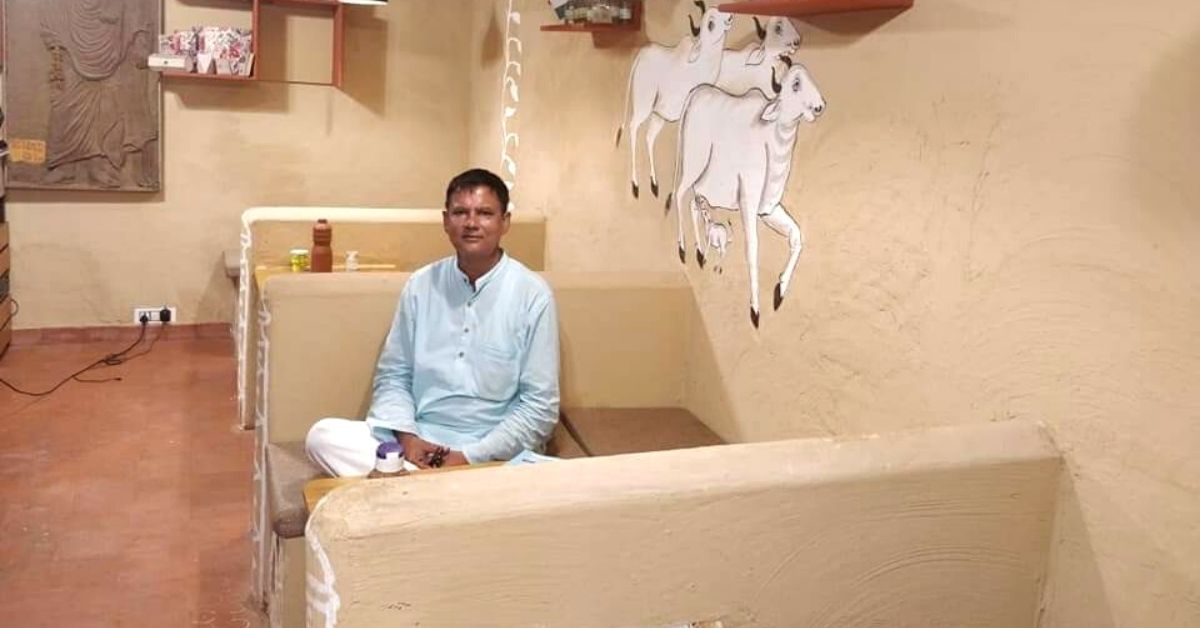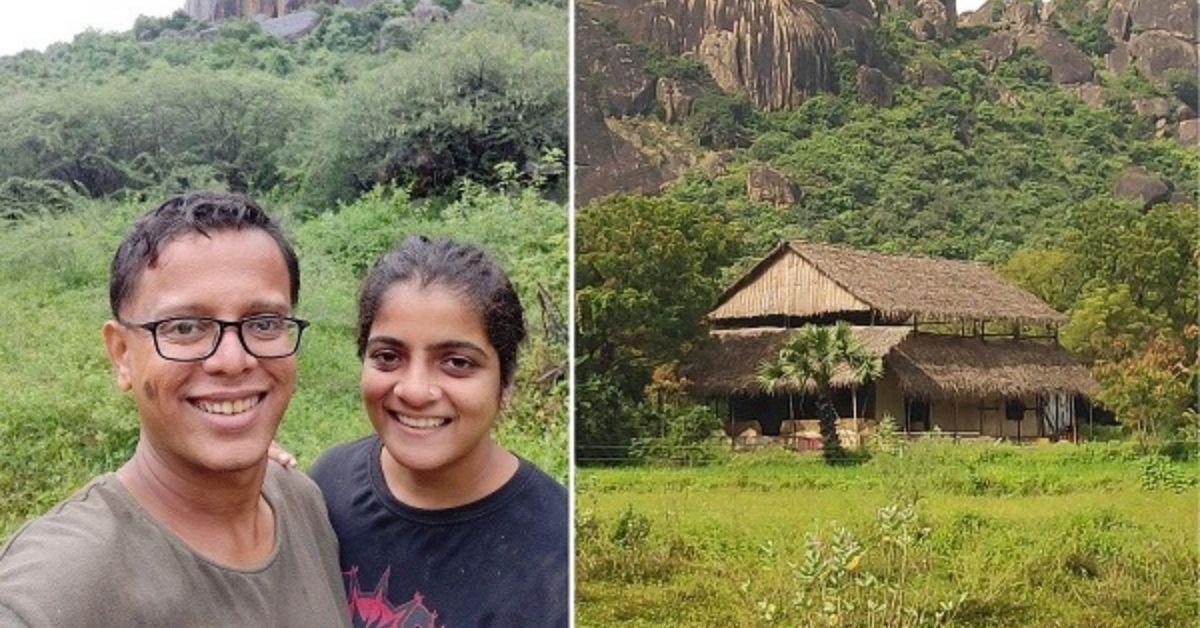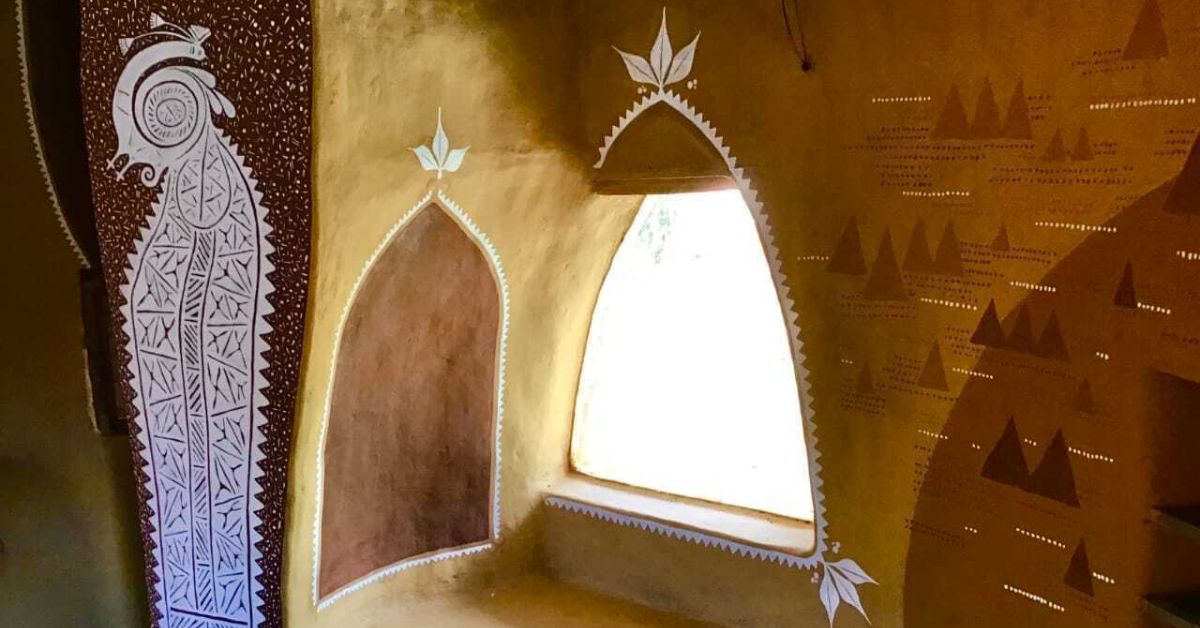Behind the Viral Delhi Professor Video: What’s the Science of Cow Dung & Cooling?
Students at Delhi University’s Laxmibai College were left stunned when they discovered a classroom wall not freshly plastered with paint or cement, but with cow dung. In a viral video, Principal Dr Pratyush Vatsala, standing on a chair, is seen applying this age-old material to the wall with the help of a staff member.
While the unusual sight has sparked debate, this practice is deeply rooted in traditional knowledge, and there’s more to it than meets the eye. Could this age-old method actually hold scientific merit? The natural properties of cow dung—acting as a binder, insulator, and even possessing antimicrobial qualities— may offer the key to sustainable, climate-conscious living spaces.
For centuries, rural India has used cow dung as an eco-friendly alternative for wall finishes and flooring, creating cool, breathable interiors. But in a world that often prioritises modern construction materials, could this tradition be making a timely comeback?
How cow dung, an ancient Indian practice, is helping homes stay 7°C cooler today
This is not a new concept. For generations in rural India, cow dung was used for plastering walls and floors, offering a natural alternative to concrete and other modern materials. It’s valued not just for being inexpensive and readily available but for its ability to act as an effective insulator. Homes coated with cow dung were cooler in the summer and warmer in the winter — a property that made them ideal for India’s varied climate.
Dr Shivdarshan Malik’s vision for sustainable construction
Dr. Shivdarshan Malik, a former professor turned environmental innovator, is reviving an ancient Indian practice — using cow dung to cool homes, but with a modern, sustainable twist. Growing up, he witnessed the gradual disappearance of lush farmland under concrete, which drove him to explore eco-friendly construction alternatives.
Inspired by traditional Indian knowledge and modern ecological concerns, he developed two innovative solutions: Vedic Plaster and Gocrete Bricks, both incorporating cow dung and natural materials.
 Dr Shivdarshan Malik inside his house.
Dr Shivdarshan Malik inside his house.
For generations, cow dung was used in rural India to plaster homes. It was affordable, widely available, and served as a natural insulator. Houses coated with cow dung remained cool in the summer and warm in the winter. However, with the rise of concrete construction, the practice faded as cow dung was deemed “backward.”
“Villagers had abandoned the practice, but cow dung kept homes cooler in summer and insulated them in winter,” says Dr. Malik.
Revisiting this traditional wisdom, Dr Malik created Vedic Plaster, a breathable mixture of cow dung, clay, neem leaves, gypsum, and more. Unlike cement-based plaster, it doesn’t absorb heat, leading to a temperature drop of up to 7°C inside homes. He further developed Gocrete Bricks, made from cow dung and locally sourced materials. These bricks are designed to reduce heat entry by up to 70 percent, unlike concrete walls that absorb and radiate heat.
At its core, Dr. Malik’s work merges civil engineering with ancient knowledge, proving that the solutions to today’s climate challenges may lie in our past.
Modern-day applications of cow dung in sustainable construction
Meanwhile, in Tamil Nadu, a couple, Sudhakar and Noushadya built an ecofriendly, sustainable home using natural raw materials and mud amidst a farm.
“We wanted to reduce our carbon footprint in every way possible. So, we built the entire structure from mud, cow dung, lime and second-hand doors and windows. Cement was used only for the terracotta tiling of the floor. The walls were whitewashed with lime instead of toxic paints,” Noushadya says.
 Sudhakar and Noushadya’s eco-friendly, sustainable home is built from natural raw materials and mud.
Sudhakar and Noushadya’s eco-friendly, sustainable home is built from natural raw materials and mud.
In Mumbai, Kiran Amati built a unique sustainable home using materials like wood, mud, cow dung, and straw. The circular, studio-style home features a dry septic tank filled with a mix of dry leaves, lime, and sawdust for waste management.
How cow dung helps to cool homes
Natural Insulation: Cow dung, when used as plaster or in bricks, does not absorb external heat the way concrete does. Instead, it acts as a natural insulator, keeping interiors cooler during summer and warmer in winter.
Temperature Reduction: Users have reported a temperature drop of up to 7°C inside homes layered with Vedic Plaster, significantly reducing the need for air conditioning.
 Kiran Amati’s sustainable home uses materials like wood, mud, cow dung, and straw in Mumbai. Picture source: Kiran Amati
Kiran Amati’s sustainable home uses materials like wood, mud, cow dung, and straw in Mumbai. Picture source: Kiran Amati
Energy Efficiency: One user noted that applying this plaster to their roof eliminated the need for AC, leading to potential savings of Rs 8,000/month on electricity.
Gocrete Bricks, made from cow dung and soil, help block up to 70% of external heat from entering the home, especially effective in hot climates.
When mixed with mud and applied to walls or floors, cow dung creates a smooth, crack-resistant surface that can hold bricks together and prevent dust accumulation. More importantly, its insulating properties help regulate indoor temperature by retaining and slowly releasing moisture, keeping interiors cool in summer and warm in winter.
It also offers natural protection against pathogens due to its antimicrobial properties. Traditionally, coating walls and floors with it was seen as a way to keep living spaces clean and disease-free.
Edited by Leila Badyari
News